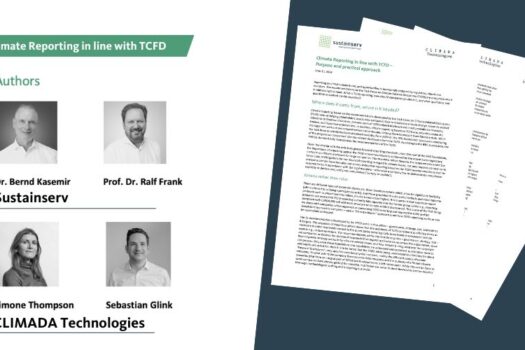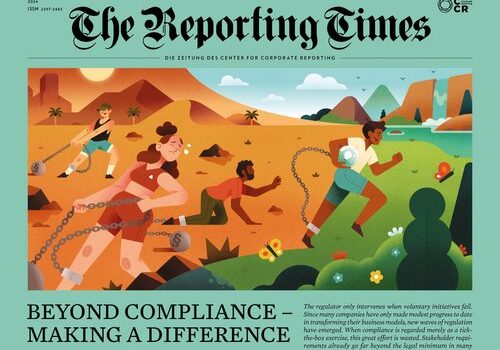Materiality assessments are key to getting to the heart of the environmental, social and governance (ESG) issues that affect a specific company and its stakeholders. Not all ESG issues affect every company, and a materiality assessment is the process of identifying the relevant issues and deciding how much they matter to an organization. Materiality assessments that include future possibilities are emerging as an important tool in ESG assessment and risk management.
A new dimension in materiality assessments: time
At Sustainserv, our unique approach to materiality assessments reveals the importance of ESG issues along three dimensions: relevance to the business (internal), relevance to stakeholders (external) and impact on sustainable development. Additionally, we link strategy and reporting and ensure connectivity to key reporting standards (e.g., GRI, International Integrated Reporting Council [IIRC]) and regulatory requirements (e.g., European Non-financial Reporting Directive [EU Directive 2014/95/EU])
Companies interested knowing which ESG issues are most important for them have embraced the practice of materiality assessments and routine reviews. Oftentimes the process for many companies is simply a rote, box-checking exercise.
For companies who are curious, open-minded and deeply interested in their interaction with ESG issues and how they can best perform and prepare for the future, a fourth dimension of assessment is emerging: time. Considering what is currently important is essential. But understanding what could be important is a central element to good risk management, strategic decision making and resource allocation. This is where taking a scenario-based approach to materiality becomes an important tool to consider.
When performing scenario-based materiality, company leaders consider a set of plausible, future circumstances (i.e., scenarios) to understand what pressures they may face, what decisions they may need to make and what the range of possible future states of the company may be. Often these scenarios include several time horizons, such as short-to mid-term (up to 5 years) and the long-term (5-10 years). The intention is to consider what events might happen that would impact a company’s ability to respond and affect its ESG performance.
Examples of predictable scenarios
The pandemic is a perfect example of a scenario that might arise during a scenario-based materiality assessment. Companies that identified a pandemic as a possible scenario three years ago may have been better prepared to take action this year when coronavirus emerged as a significant threat. Perhaps they were better able to care for employees because they already had stocked a supply of personal protective equipment or envisioned how a majority of their employees could quickly shift to working from home.
To use a climate change example, the availability of water resources is likely to rank high in a materiality assessment for a company with intense water use: A three-dimensional materiality assessment confirms that water management is important to both the business and stakeholders and significantly impacts the environment. The assessment might conclude with how the company currently manages its water resources. During a scenario-based materiality assessment, that company would spend additional time considering different situations that include potential and likely threats to its water management: droughts, infrastructure failure or attack, and external or internal supply contamination.
Criteria for scenario selection
A key factor in good scenario-based materiality assessments is the selection of the scenarios to consider. Criteria for good scenarios are:
- They are plausible and realistic.
- They are relevant to the company’s internal and/or external stakeholders.
- There is an appreciable chance that the scenarios could occur over a relevant time frame.
With a thoughtful selection of such scenarios, companies can then consider how their material issues may evolve in terms of importance, risks, opportunities and impacts now and into the future.
Scenario-based materiality assessments can deliver greater stability, agility and resiliency
Scenario-based materiality assessments involve a higher requirement for imagination and innovation. They are a way to innovate: not doing just what you’ve done before, but exploring what could happen. When applied rigorously, and with creative thinking, a company can plan and strategize to reduce risk and prepare for opportunities.
For companies that are serious about ESG issues and have tied sustainability to their long-term success, a scenario-based materiality assessment is a way to get an upper hand on what the future may bring. For growth, profitability and viability, taking this deeper dive into materiality is a highly effective means to achieve stability, agility and resiliency.
Get in touch. We are happy to tell you more about it.






